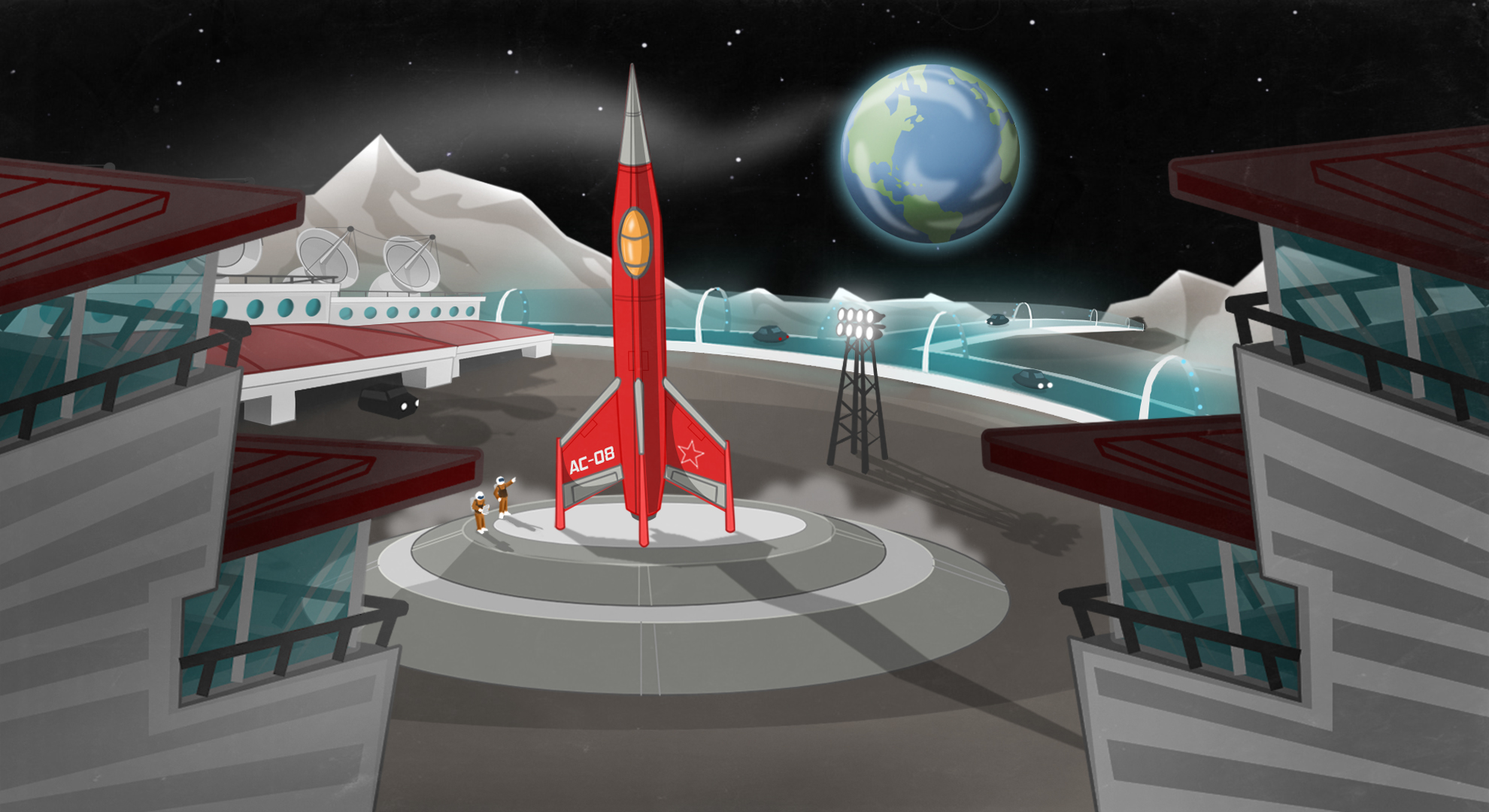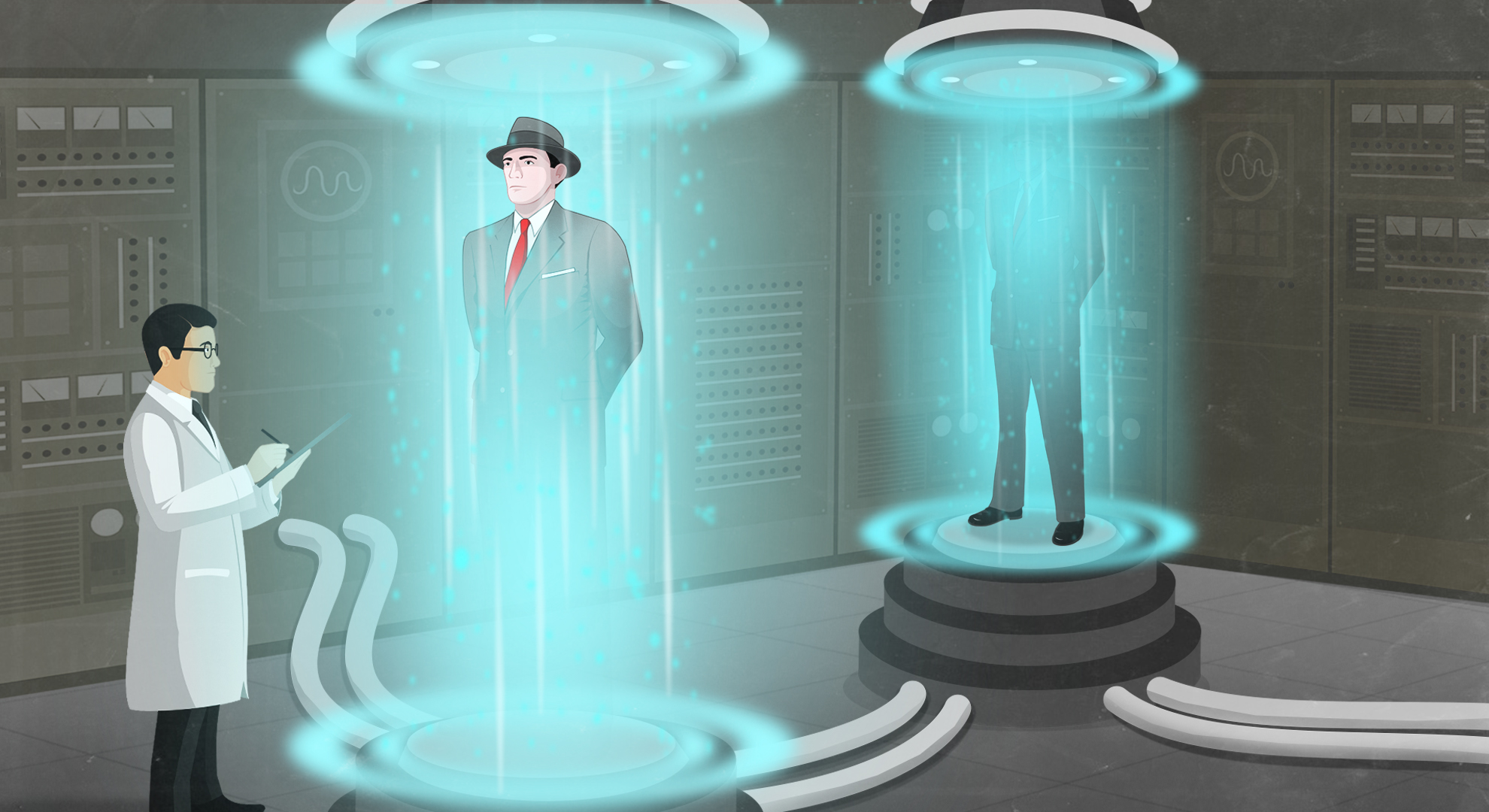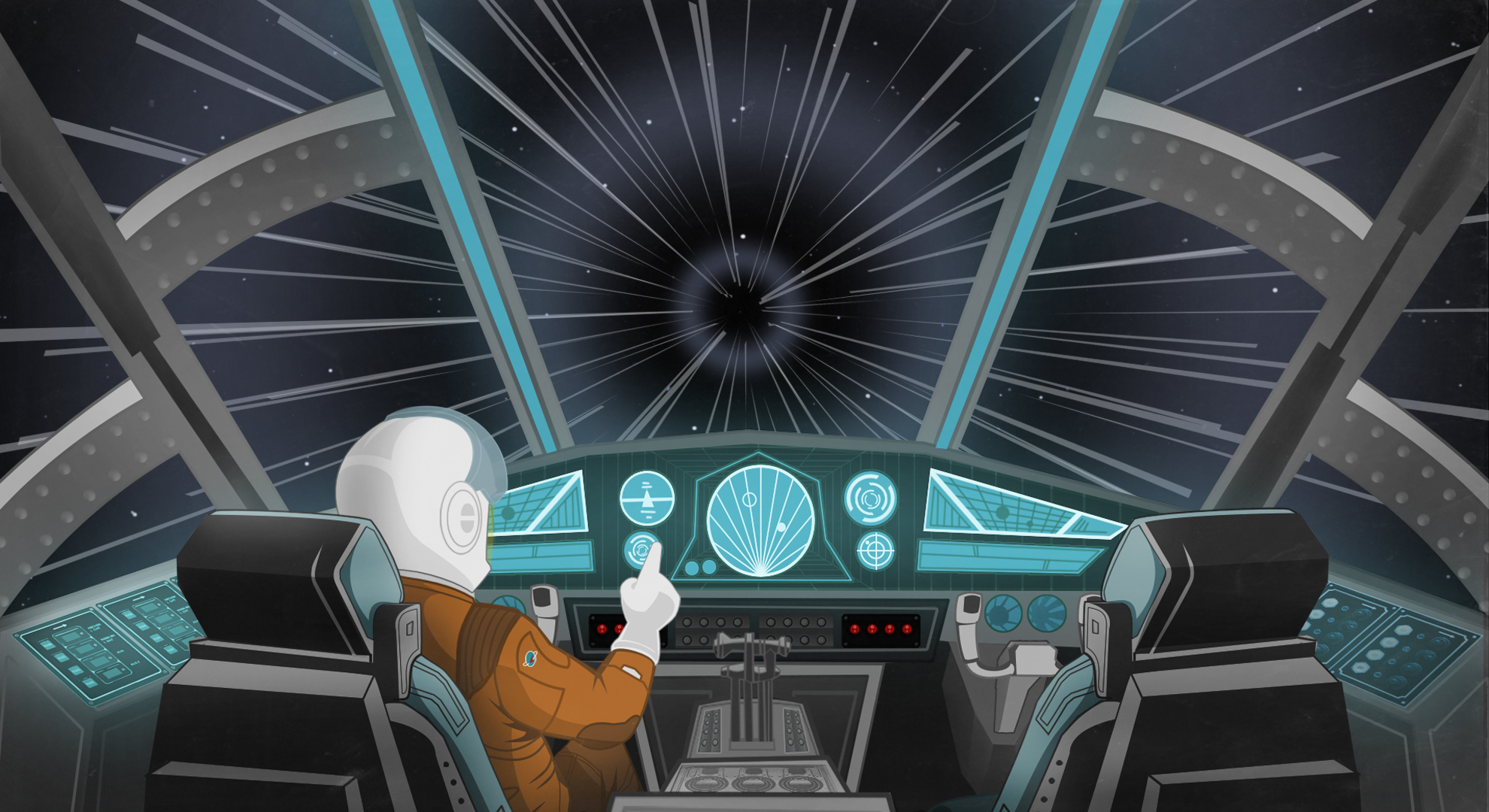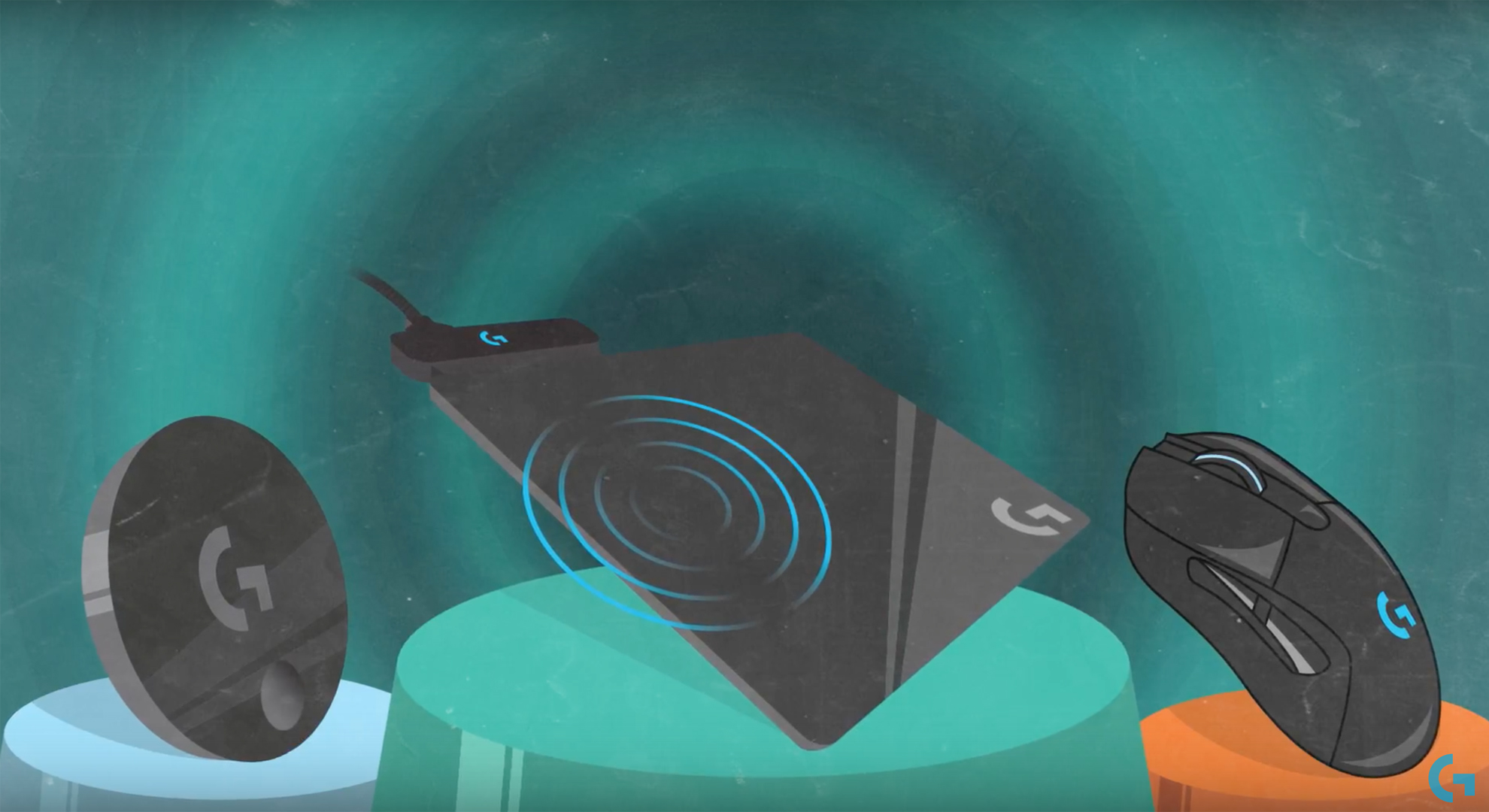Plenty of sci-fi is speculative, but much simply anticipates what should be here tomorrow – think of Arthur C Clarke’s idea of geostationary orbit, for instance, which is now famously a reality. Other touchstones, such as ‘videophones’ that let you actually see the other person (astounding!) and computers you can talk to like HAL 9000 or Alien’s MU-TH-UR 6000 (think Alexa, Cortana, and Siri) have become commonplace so rapidly we barely even acknowledge the shift.
Yet plenty of other stuff remains AWOL. Where are the flying cars, the ray guns, the tight-fitting Rayon jumpsuits? Where are the High Street memory implants, the sky cities and the futuristic games of space chess played on funny glowing boards?
Not all of it’s terribly realistic, of course. But some things are supposed to be here now, and they’re not, and there’s no good reason why. Things like…

1. Moonbases
Since before the first moon landing, a moonbase has been just around the corner. The base in the hit 1975 British TV show Space: 1999 was prototypical – hundreds of scientists living and working in matching jumpsuits. When it launched in 1975, it was the most expensive show ever seen on British screens.
Even today, when the real 1999 is an ageing wasteland of nu-metal and Pokémon cards instead of impossibly futuristic, NASA calls its simulation game ‘Moonbase Alpha’ after the show. Tragically, the real Moonbase Alpha was doomed to wander the universe (in badass flares) after nuclear waste blew the moon right out of orbit and into a black hole.
The most acclaimed sci-fi movie ever also saw moonbases as mundane by the millennium. Released in April 1968 (over a year before the Apollo 11 landing), 2001: A Space Odyssey sees Dr. Heywood Floyd take a Pan Am flight to Clavius Base, partly to examine the alien monolith and partly to get away from all those confusing monkeys. Meanwhile for the real millennium, all we got was live coverage of an IT meltdown that never happened.
When will we finally get one?
Chinese scientists have been in talks with the European Space Agency about creating a moonbase, which could happen ‘soon.’ Meanwhile, NASA says it could do you one for just $10 billion by 2022. Whip round?

2. Commercial space travel
Space flight has long been considered so common in the near-future it’s just like taking a regular plane. Movies such as Alien (1979), Total Recall (1990 and absolutely not 2012), Solaris (1972 or 2002 if you must) and many more occur in what’s recognizably now-ish. Most of the time they aren’t even in jumpsuits. So where are our boarding cards for Mars?
Commercial flights are still a bit short. An airliner’s maximum altitude is around 45,000 feet, or 8.5 miles. Space is generally agreed to begin at the Karman Line, at 327,360ft. That’s 53.5 miles further up. Go another 140 million miles straight on and there’s Mars.
When will we finally get it?
Pan-Am was happy to lend its name to Kubrick’s 2001, but the airline went bust in 1990, so that’s a no-go. So long as British Airways has computers less willing than HAL they’re probably best avoided, and while today’s budget airlines could start moontrips (stopover at Pluto), there’s a high chance of it going even more Event Horizon than their regular flights.
Virgin Galactic is selling seats today, but tickets are $250,000 up front, with no time of departure. Plus even they won’t get your ass to Mars, or even the moon – it will only get you pretty close to Albuquerque.

3. Teleporters
If we can’t fly into space, we should at least be able to zap there via a teleporter that makes us go all wobbly with a cool noise. Matter transference – by machines that take us apart, transmit and reassemble us like some kind of meat Tweet – have been a staple of future technology since 1877.
Both Edward Page Mitchell’s story of that year (The Man Without a Body) and the 1957 movie of The Fly beat Star Trek’s famous Transporter into existence. Even Fireball XL-5 featured a dematerializer before Scotty ever beamed anyone anywhere. Cult British series Blake’s 7 also made great use of a teleporter in its run from 1978 to 1981, blowing 90 percent of its £25 SFX budget in the process.
When will we finally get it?
While scientists have proposed real life ‘dilithium crystal’ drives twice as fast as current technology, there’s been little progress on teleportation. German scientists created a teleporter in Potsdam during 2015, but given that it would mill you away layer by layer before sending the scan of your shrieking corpse to the horrified owners of a 3D printer, you’d have to be pretty desperate to get out of Potsdam.

4. Bionics
Bionic abilities are the dream of every 1970s child, and nobody embodied the near-future promise of superpowers better than Steve Austin, the Six Million Dollar Man.
Adjusted for inflation, The $33,043,783.78 Man was astronaut Steve Austin, who survived an aircrash with just two new legs, a right arm and a left eye. Able to run at 60mph (though not in built-up areas), see in the infrared and punch things as hard as a bulldozer, he becomes a secret agent, because nobody notices things like that. He also gets a really sweet red tracksuit.
Bionic crime fighting was so popular that Austin’s inability to land planes was soon mirrored by his attractive tennis-pro girlfriend’s inability to land a parachute. She was rebuilt to become The Bionic Woman, getting her own spin-off in 1976. Tragically she never got the tracksuit.
The promise of cutting-edge bionics continued through the 1980s, only to get darker. The dystopian RoboCop has everything bar his brain, guts and his chin replaced with the sort of unsubtle Detroit metal that explains why Detroit doesn’t make anything anymore, and everybody dies.
When will we finally get them?
Powerful prosthetic limbs – including hands that can be moved by thought alone – are surprisingly close. Yet the goalposts have moved. Advances in DNA ushered in the ideas of cloning for genuine spare parts (see 2005’s The Island) and genetic enhancements, as seen in James Cameron’s 2000 TV show Dark Angel. Today, AI and nanotechnology further open the way for ‘transhumanism’ – tech-blended super-people. Game series Deus Ex, for instance, is a long way beyond the dream of simply being fast enough to outrun, say, Oscar Pistorius’ bullets.

5. Faster than light travel
Humanity has been spacefaring for well over half a century, but if we’re really going to explore we need very fast ships. That’s because space, as Douglas Adams famously said, “Is big. Really big.” In fact, it’s so big that light hasn’t had time to cross from one side to the other yet, despite having had almost 14 billion years.
While many promises are futuristic – Star Trek’s Warp Drive, for instance, exists in the 23rd century – the Millennium Falcon of Star Wars (1977) had its star-streaking Hyperdrive ‘A Long Time Ago’. Battlestar Galactica’s FLT Drive was also created many years before now, while the Stargate (1994) exists in the present day. Even Event Horizon manages it just 30 years from now.
When will we finally get it?
Probably not soon. Light travels just under 300,000 kilometers per second, while our fastest ship (the New Horizons probe) does 16km per second. New Horizons would take over 79,000 years to reach Proxima Centauri. Even light takes four years – that’s why it’s FTL FTW.
A 1994 paper by theoretical physicist Miguel Alcubierre proposed a space-time warping drive that really would allow faster-than-light travel, though even a bus-length ship would need a fuel tank with the mass of Jupiter just to start up. Perhaps wormholes – shortcuts in space-time, as seen in Stargate and Interstellar (2014) – are our best hope.

6. Machines powered by energy fields
It’s the kind of thing that, even 20 years ago, looked so impossibly futuristic it was indistinguishable from magic. A zero-lag mouse that works via an energy field? Powered by a battery that never goes flat? It was unthinkable. But via the 2017 wizardry of POWERCORE modules (magnetically compatible with G903 and G703 mice) and POWERPLAY mats that charges wirelessly, it’s now a reality.
Logitech’s LIGHTSPEED wireless tech is already the go-to choice for professionals in esports teams including Cloud9, TSM, Chiefs and more. Meanwhile, the new range-topping G903 mouse is state of the art, created around a cutting-edge sensor with removable side buttons, ambidextrous design, a hyperfast scroll wheel and adjustable mass.

When will we get it?
Now! The POWERPLAY charging base comes with both hard and cloth surfaces, there’s no need for a separate USB data receiver and the lighting is, of course, customizable. Meanwhile, the mice – the G703 and ultimate new G903 – are faster than many wired models, and charge perpetually whether you’re playing or not. Futuristic? You know it.
Now for a limited time you can enter for a chance to win a new G903 mouse and POWERPLAY system from Logitech G.
Sponsored by Logitech
Sign up for breaking news, reviews, opinion, top tech deals, and more.